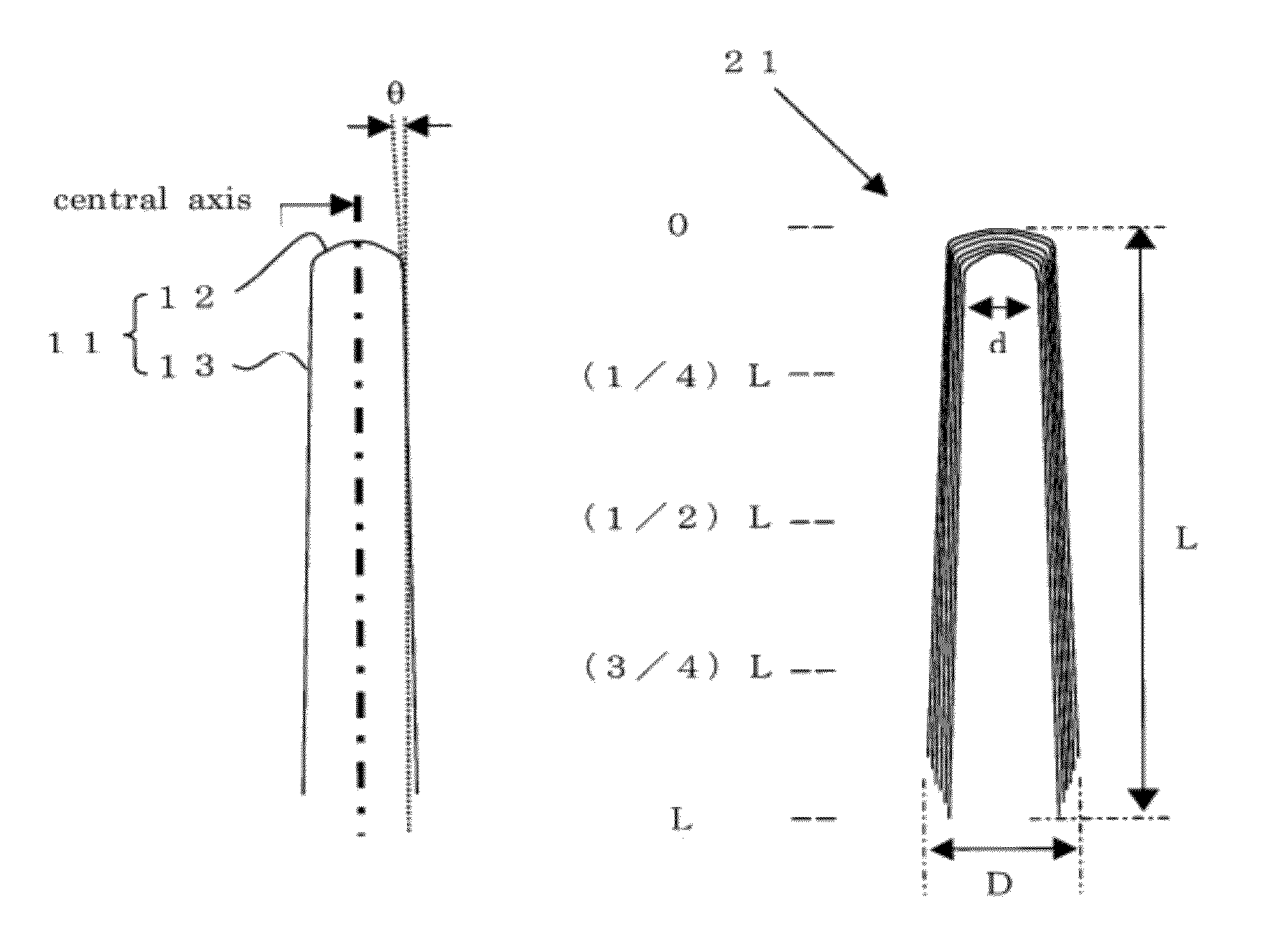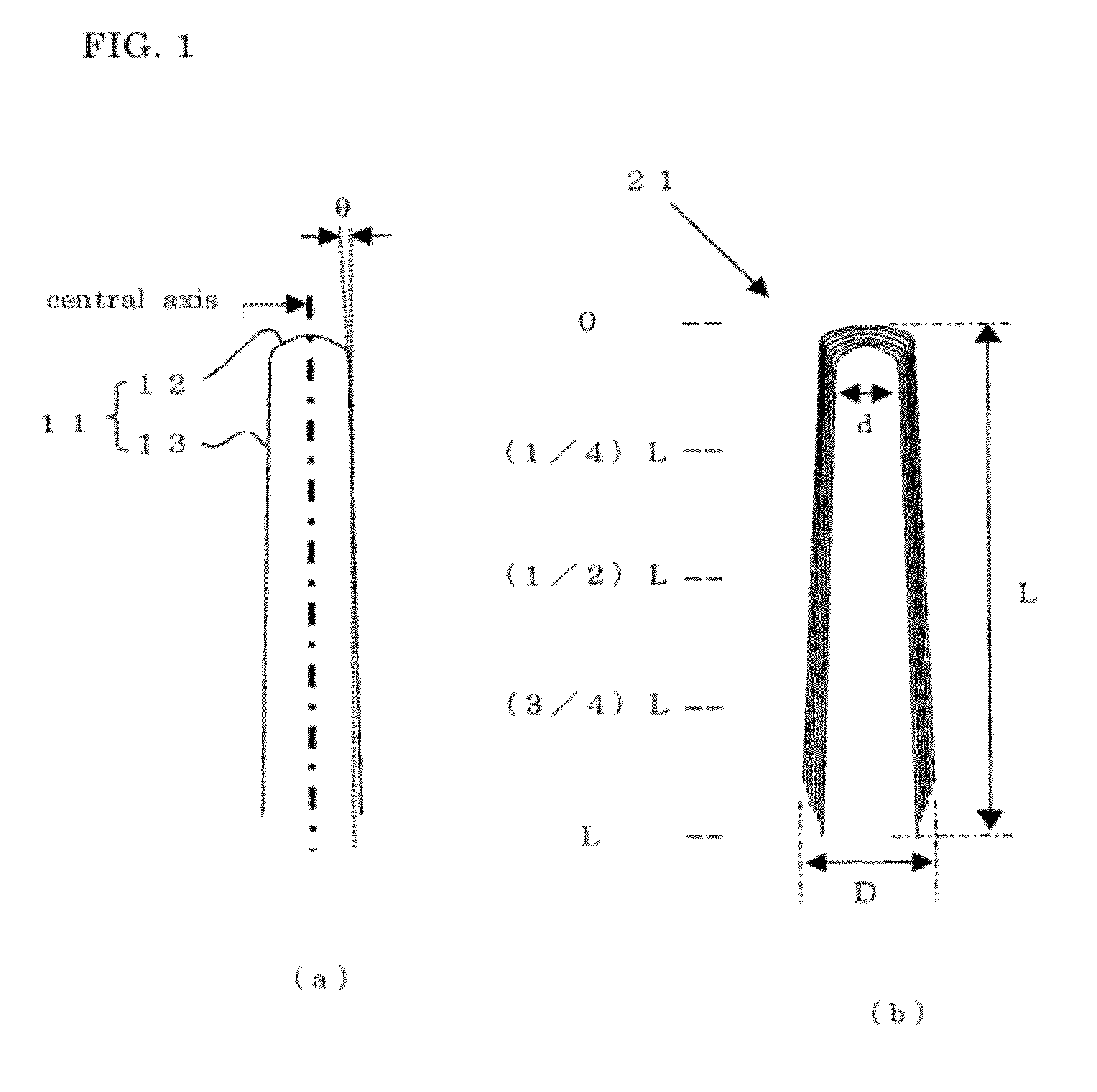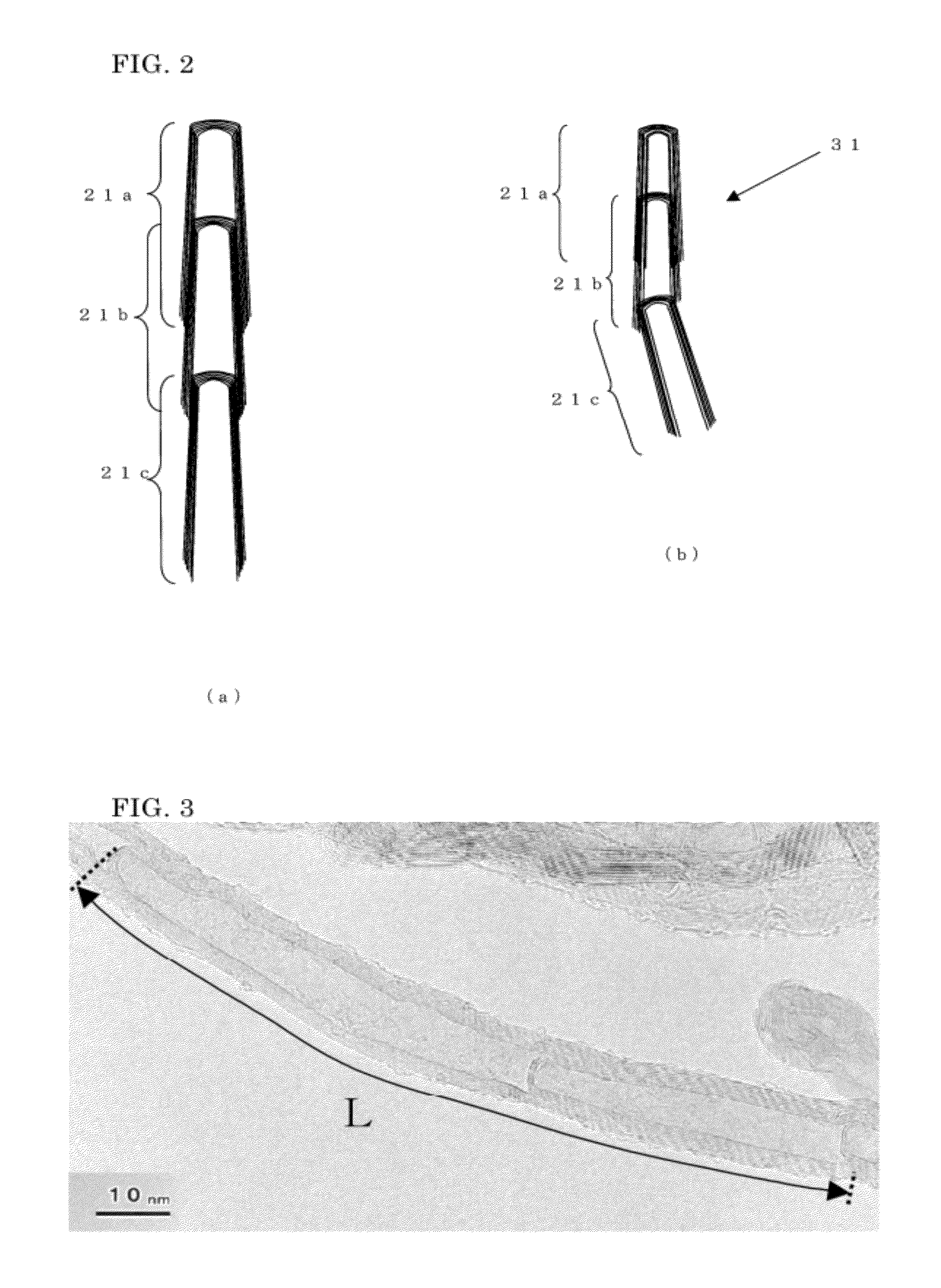Conductive resin composition
a technology of conductive resin and composition, which is applied in the direction of non-metal conductors, physical/chemical process catalysts, cell components, etc., can solve the problems of deterioration of the physical properties of the resultant resin, unsatisfactory corrosion resistance and chemical resistance, and increased molding difficulty, so as to achieve high moldability and conductivity, high conductivity, and high conductivity
- Summary
- Abstract
- Description
- Claims
- Application Information
AI Technical Summary
Benefits of technology
Problems solved by technology
Method used
Image
Examples
examples
[0118]There will be described Examples together with Comparative Examples.
Reference Examples A1 to A3
Synthesis of Fine Carbon Fibers
reference examples a1
[0119]In 500 mL of ion-exchanged water were dissolved 115 g of cobalt nitrate [Co(NO3)2.6H2O: molecular weight 291.03] (0.40 mol) and 102 g of magnesium nitrate [Mg(NO3)2.6H2O: molecular weight 256.41] (0.40 mol), to prepare raw-material solution (1). Furthermore, 220 g of powdery ammonium bicarbonate [(NH4)HCO3: molecular weight 79.06] (2.78 mol) was dissolved in 1100 mL of ion-exchanged water, to prepare raw-material solution (2). Next, raw-material solutions (1) and (2) were mixed at a reaction temperature of 40° C., after which the mixture was stirred for 4 hours. The precipitate formed was filtered, washed and then dried.
[0120]The product was calcined and pulverized with a mortar to provide 43 g of a catalyst. A crystal lattice constant “a” (cubic system) of the spinel structure in this catalyst was 0.8162 nm, and a metallic element ratio in the spinel structure of the substitutional solid solution was Mg:Co=1.4:1.6.
[0121]A quartz reaction tube (inner diameter: 75 mmcp, height:...
reference example a2
[0124]In 900 mL of ion-exchanged water was dissolved 123 g of cobalt nitrate [Co(NO3)2.6H2O: molecular weight 291.03] (0.42 mol) and then was added 17 g of magnesium oxide [MgO: molecular weight 40.30] (0.42 mol), and the mixture was mixed to prepare raw-material slurry (1). Furthermore, 123 g of powdery ammonium bicarbonate [(NH4)HCO3: molecular weight 79.06] (1.56 mol) was dissolved in 800 mL of ion-exchanged water, to prepare raw-material solution (2). Next, raw-material slurry (1) and raw-material solution (2) were mixed at room temperature, after which the mixture was stirred for 2 hours. The precipitate formed was filtered, washed and then dried. The product was calcined and pulverized with a mortar to provide 48 g of a catalyst. A crystal lattice constant “a” (cubic system) of a spinel structure in this catalyst was 0.8150 nm, and a metallic element ratio in the spinel structure of the substitutional solid solution was Mg:Co=1.2:1.8.
[0125]A quartz reaction tube (inner diamete...
PUM
| Property | Measurement | Unit |
|---|---|---|
| angle | aaaaa | aaaaa |
| inner diameter | aaaaa | aaaaa |
| inner diameter | aaaaa | aaaaa |
Abstract
Description
Claims
Application Information
 Login to View More
Login to View More - R&D
- Intellectual Property
- Life Sciences
- Materials
- Tech Scout
- Unparalleled Data Quality
- Higher Quality Content
- 60% Fewer Hallucinations
Browse by: Latest US Patents, China's latest patents, Technical Efficacy Thesaurus, Application Domain, Technology Topic, Popular Technical Reports.
© 2025 PatSnap. All rights reserved.Legal|Privacy policy|Modern Slavery Act Transparency Statement|Sitemap|About US| Contact US: help@patsnap.com



